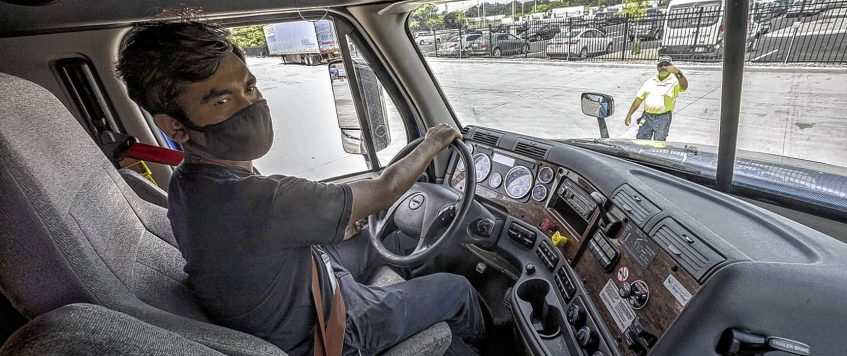-
29
Apr
US Trucking Companies Boost Pay in Hunt for Drivers as Demand Surges
U.S. trucking companies are scrambling to hire more drivers as roaring consumer demand and tight shipping capacity stoke a resurgent freight market.
Knight-Swift Transportation Holdings Inc., the largest truckload carrier in North America, is the latest trucking company to raise pay. It said last week that its wages for recently certified drivers have jumped by 40% or more in recent months.
The company said its driving-school graduates are on track to earn more than $60,000 a year in their first year after training. Median pay for heavy-truck and tractor-trailer drivers last year was $47,130, according to the Bureau of Labor Statistics.
“We need more drivers and we need them now,” Yellow Chief Executive Officer Darren Hawkins said. “Demand is strong, capacity is tight, and we’re going to be in hiring mode” at least through the end of 2021.
Trucking demand began surging last summer as the U.S. economy started to emerge from lockdowns put in place to slow the spread of the coronavirus, and as retailers and manufacturers rushed to restock pandemic-depleted inventories. Transport demand built up additional steam into the holidays as bottlenecks at busy ports led to freight backlogs, and it hasn’t let up since.
Analysts expect shipping volumes to stay strong as the economy kicks into higher gear on new government pandemic aid and increased Covid-19 vaccination rates. That will put pressure on freight pricing as shippers compete for a limited supply of available trucks, and carriers boost pay and bonuses in an effort to meet the demand.
“In our view, this is the tightest driver market we have seen in our nearly three decades of being involved in the trucking sector,” Cowen & Co. transport analyst Jason Seidl wrote in an April 12 research note.
Three-quarters of carriers responding to a Cowen survey in the first quarter of this year said they believe they will have to increase driver pay this year, compared with 50% in the same period in 2020.
Per-mile truckload costs rose 8.1% in February from the previous year, the biggest annual increase since October 2018, according to Cass Information Systems Inc., which handles freight payments for companies.
The swings are even sharper on trucking’s spot market, where shippers book last-minute transportation and pricing tends to be more volatile. The ratio of available loads to trucks more than doubled in March from the previous year, according to online freight marketplace DAT Solutions LLC, while the average cost to hire a big rig rose by 41.9%, to $2.65 a mile.
Trucking companies are splashing out on new equipment as they hustle to expand capacity. Fleets placed 126,500 net orders for heavy-duty trucks in the first quarter, more than triple the level of the same period last year, according to preliminary figures from transportation data firm ACT Research.
Getting drivers to fill those seats has been challenging, trucking executives say. As of March, overall employment in the sector was down by 33,500 jobs, compared with the same month in 2020, when the pandemic hit the U.S. Some drivers parked their trucks in the early months of the pandemic as transport demand plummeted and workers might have feared getting sick. Industry executives say enhanced unemployment benefits and stimulus checks have curbed driver availability. A federal database rolled out last year that tracks drug or alcohol use violations by holders of commercial driver’s licenses could also be limiting the pool of potential workers, they say.
“We anticipate further wage action will be necessary this year just to maintain current fleet size,” Jack Atkins, a transportation analyst with investment bank Stephens Inc., wrote in a research note last month.
But trucking companies face longstanding challenges recruiting and retaining workers for a profession that involves long periods on the road. Fleets are also competing for labor with sectors like construction, where strong demand in the housing market is creating additional jobs that don’t require days or weeks away from home.
Mr. Vieth said it could take until early next year “before the driver supply starts finally catching up with the freight to be hauled.”
by Jennifer Smith / WSJ

